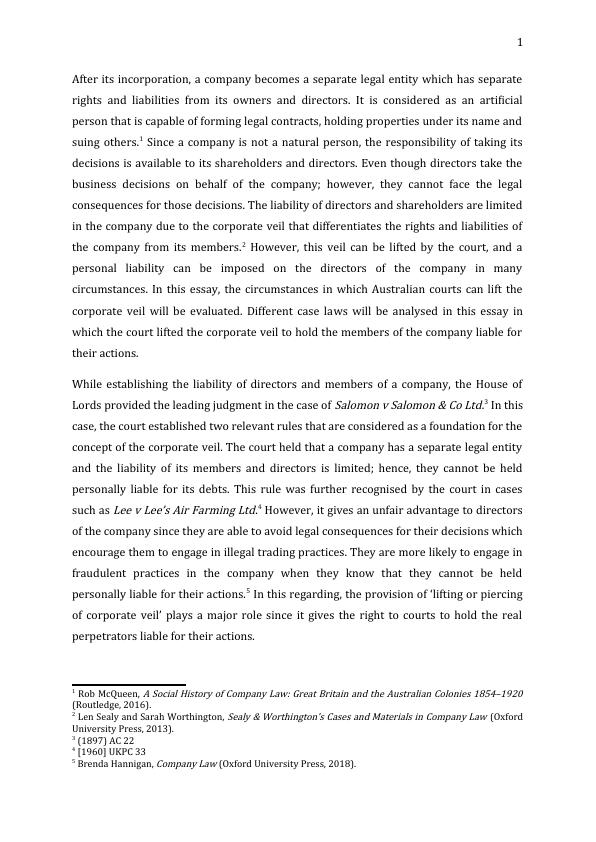Lifting the Corporate Veil: Circumstances and Implications
Assignment 1 for the course LAW205 - Commercial and Corporate Law for Accountants. It is a research essay worth 20% or 20 marks with a word count of 1,500 (including footnotes). The assignment must be submitted in Word or PDF format and can be submitted on or before 11.59pm (ACST) on 7 April 2019. The assignment requires the use of either CDU Harvard or AGLC referencing styles and additional research is required.
Added on 2023-01-17
About This Document
Lifting the Corporate Veil: Circumstances and Implications
Assignment 1 for the course LAW205 - Commercial and Corporate Law for Accountants. It is a research essay worth 20% or 20 marks with a word count of 1,500 (including footnotes). The assignment must be submitted in Word or PDF format and can be submitted on or before 11.59pm (ACST) on 7 April 2019. The assignment requires the use of either CDU Harvard or AGLC referencing styles and additional research is required.
Added on 2023-01-17
End of preview
Want to access all the pages? Upload your documents or become a member.



